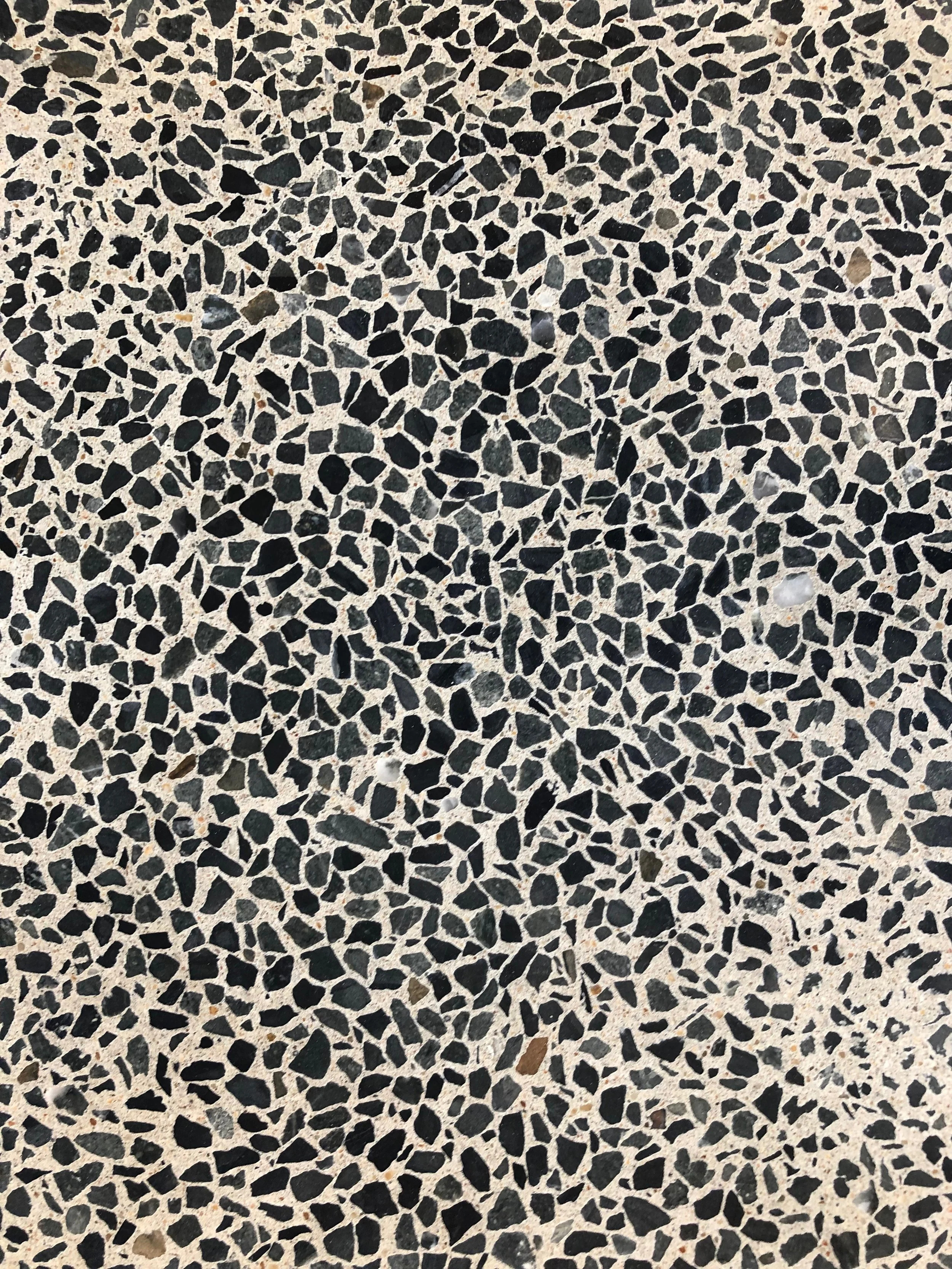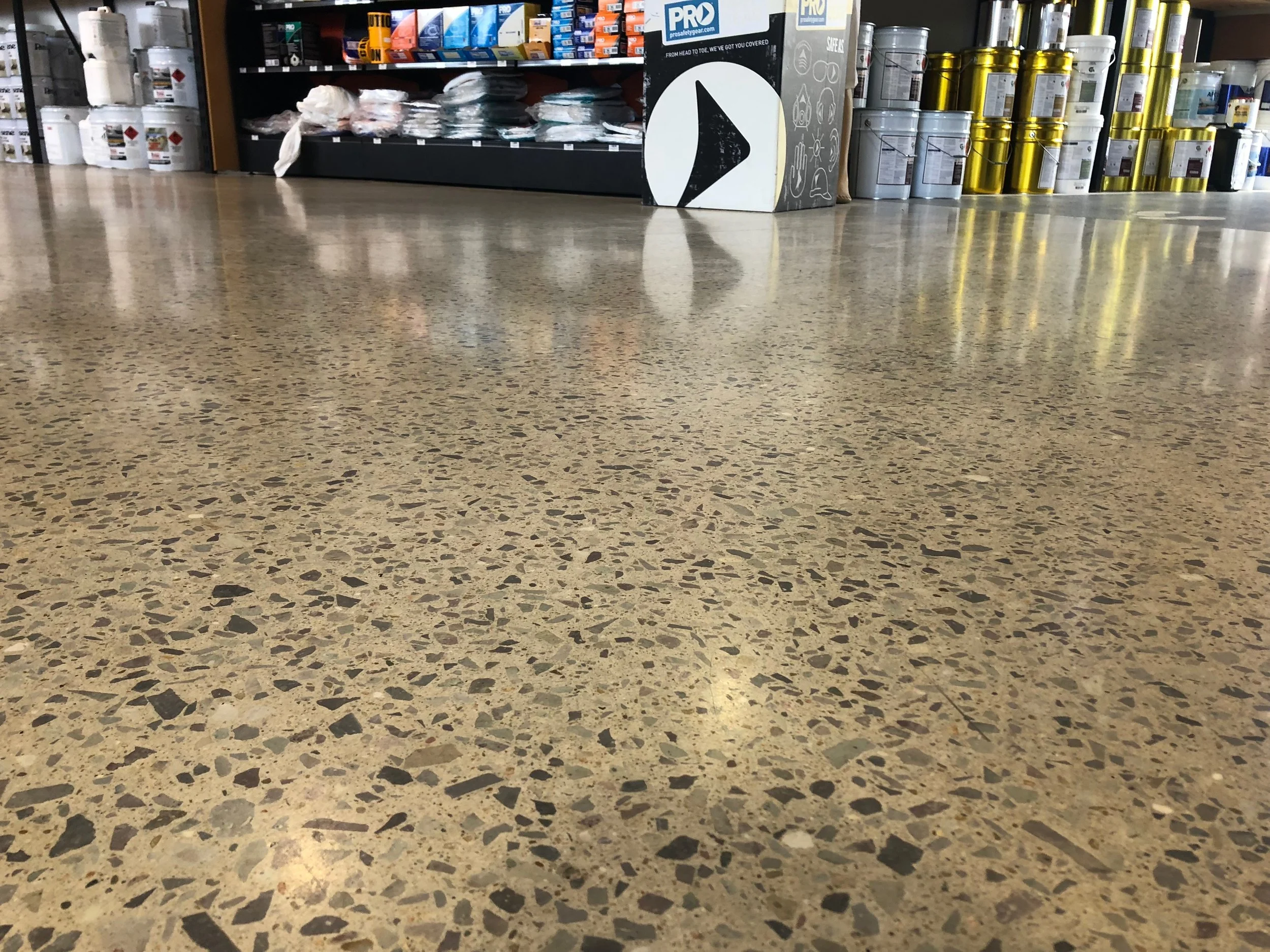Interior Finishes
Polished concrete, burnished concrete or hone & seal? There are so many options for internal that it can sometimes be confusing. Depending on your situation, one may be more suited than the rest.
Polished Concrete
Polished concrete is seen as the pinnacle of internal flooring finishes. Due to its durability and clean-ability it has become extremely popular in both domestic and commercial applications. Polished concrete is created by mechanically grinding and polishing the concrete up to a high shine. As the concrete itself has been polished the surface is extremely durable and resistant to scratching, much more than if a film forming sealer had been used.
Penetrating sealers can be used in the polishing system to chemically create a hydrophobic surface which helps prevent straining. Polished concrete is 100% dependent on the concrete slab. If the slab is in poor condition, this may affect the final finish of the floor.
Hone & Seal
A Hone & Seal finish is simply a concrete slab cut and ground to expose as little or as much stone as desired, and then sealed with a topical sealer. It looks very similar to a mechanical polish and is usually more affordable. A Hone & Seal floor is different to polished concrete as their is a thin layer of sealer that protects the floor and makes it impervious to water and stains. A Hone & Seal floor can scratch from wear depending on traffic, use and the type of sealer used.
The type of sealer can vary from single pack solvent based through the two pack polyurethanes. It is important to think about long term protection and re-coat periods when choosing the sealer for your floor. A two pack polyurethane is a far superior product compared to a single pack solvent based sealer. There can be significant price difference, However you can expect 3-4 times the life span from the two pack poly urethane.
Completed by Sterrantino Developments
Single Colour Epoxy Flooring
Epoxy floors are a great way to rejuvenate on old room. The coatings can be tinted to a wide variety of colours to suite many situations. Using epoxy is a great way to achieve a very durable surface and it is great for internal areas that do not receive any direct sunlight. If sunlight does reach the floor, then a urethane top coat is highly recommended. Using a urethane top coat will UV stabilize the epoxy and prevent it from yellowing in the direct sunlight.
For a single colour system to look effective the concrete substrate must be in good condition with all the divots and cracks filled and levelled. Once the plain colour is applied, any imperfections in the slab will be highlighted and stand out.
Seamless Flake Flooring
Traditionally used in garage flooring and workshops, flake flooring has seen a rise in popularity of being used in living spaces. available in a wide range of colours allows flake flooring to suite many different interior aspects. Flake flooring systems are usually comprised of two coats of epoxy and two coats of polyurethane, creating an extremely durable surface capable of handling commercial traffic.
A flake flooring system creates a slight textured finish on the floor which can help in covering and masking any imperfections in the concrete substrate. If your substrate has extensive cracks and/or divots, a flake flooring system may be the best option for you.
Metallic Epoxy
Metallic epoxy floors are becoming more and more popular due to the uniqueness of the finish and the durability. Metallic epoxy floor’s are created by mixing a metallic pigment through a clear epoxy resin. A metallic epoxy floor can be applied up to 5 times as thick as regular epoxy coatings to achieve that 3D look. As there is 5 times as much product on the floor the thickness of the coating is also 5 times greater which correlates to the coatings longevity.




